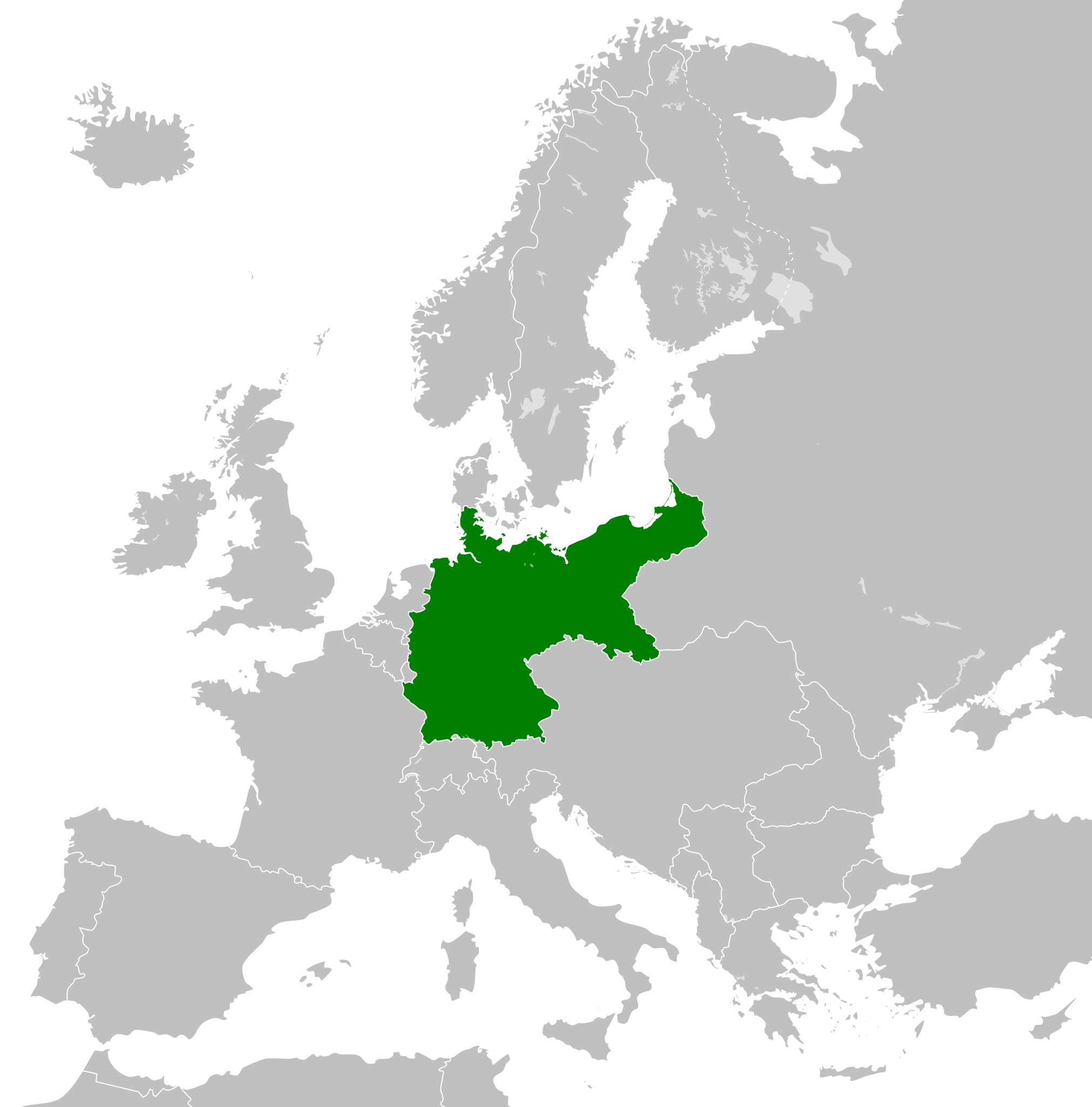German Empire (1871–1918): Difference between revisions
More languages
More actions
No edit summary Tag: Visual edit |
No edit summary |
||
| Line 41: | Line 41: | ||
}} | }} | ||
The '''German Empire''', also referred to as '''Imperial Germany''', the '''Second Reich''', as well as simply '''Germany''', was a country in Central Europe that existed from the [[Franco-Prussian War]] of 1871 until the end of the [[First World War]]. In November 1918, the German monarchy was overthrown and the [[German Reich (1918–1933)|Weimar Republic]] was established. | The '''German Empire''' ''(German: Deutsches Reich)'', also referred to as '''Imperial Germany''' ''(German: Deutsches Kaiserreich)'', the '''Second Reich''' ''(German: Zweites Reich)'', as well as simply '''Germany'''<br/> ''(German: Deutschland)'', was a country in Central Europe that existed from the [[Franco-Prussian War]] of 1871 until the end of the [[First World War]]. In November 1918, the German monarchy was overthrown and the [[German Reich (1918–1933)|Weimar Republic]] was established. | ||
== Unification == | == Unification == | ||
Revision as of 17:50, 31 January 2023
| German Empire Deutsches Kaiserreich | |
|---|---|
| 1871–1918 | |
|
Flag | |
 | |
| Capital and largest city | Berlin |
| Official languages | German |
| Dominant mode of production | Capitalism |
| Government | Federal parliamentary semi-constitutional monarchy[1][2]
|
| Emperor | |
• 1871–1888 | Wilhelm I |
• 1888 | Friedrich III |
• 1888–1918 | Wilhelm II |
| Chancellor | |
• 1871–1890 | Otto von Bismarck |
• 1890–1894 | Leo von Caprivi |
• 1894–1900 | Chlodwig zu Hohenlohe-Schillingsfürst |
• 1900–1909 | Bernhard von Bülow |
• 1909–1917 | Theobald von Bethmann-Hollweg |
• 1917 | Georg Michaelis |
• 1917–1918 | Georg von Hertling |
• 1918 | Max von Baden |
| Area | |
• Total | 540,858 km² |
| Population | |
• 1910 census | 64,925,993 |
The German Empire (German: Deutsches Reich), also referred to as Imperial Germany (German: Deutsches Kaiserreich), the Second Reich (German: Zweites Reich), as well as simply Germany
(German: Deutschland), was a country in Central Europe that existed from the Franco-Prussian War of 1871 until the end of the First World War. In November 1918, the German monarchy was overthrown and the Weimar Republic was established.
Unification
In the mid-19th century, Germany was divided into 39 states. The dominant state, Prussia, was ruled by an aristocracy called the Junkers. Prussia fought against Denmark in 1864 over the status of Schleswig and Holstein and defeated Austria in 1866, becoming the leading force in the German nationalist movement and forming the North German Confederation. Prussia took control of the rest of Germany in 1870 when it went to war against France. Otto von Bismarck, a Prussian Junker, became the first emperor of Germany.[4]
Economy
Germany rapidly industrialized following its unification, with coal production increasing from 34 to 277 million tons, pig-iron increasing from 1.3 to 14.7 million tons, and steel increasing from 0.3 to 14 million tons between 1870 and 1914. In 1879, Germany introduced a series of tariffs, which rose to 13% by 1914.[4]
Colonialism
The German Empire colonized parts of Africa and Oceania. It committed genocide against the Herero and Nama peoples in what is now Namibia. Germany lost control of its colonies after the First World War.[5]
References
- ↑ Nipperdey, Thomas, "Deutsche Geschichte 1866-1918: Zweiter Band: Machtstaat vor der Demokratie" (1995), p. 98–108.
- ↑ Röhl, John C. G. "Kaiser Wilhelm II: A Concise Life" (2014), p. 172–173.
- ↑ Wheeler-Bennett, John (1967). The Nemesis of Power The German Army in Politics 1918–1945. London: Macmillan. pp. 13–14.
- ↑ 4.0 4.1 Neil Faulkner (2013). A Marxist History of the World: From Neanderthals to Neoliberals: 'The Age of Blood and Iron' (pp. 159–161). [PDF] Pluto Press. ISBN 9781849648639 [LG]
- ↑ "Risen from the Ruins: The Economic History of Socialism in the German Democratic Republic" (2021-04-20). Tricontinental. Archived from the original on 2022-04-26. Retrieved 2022-08-12.

